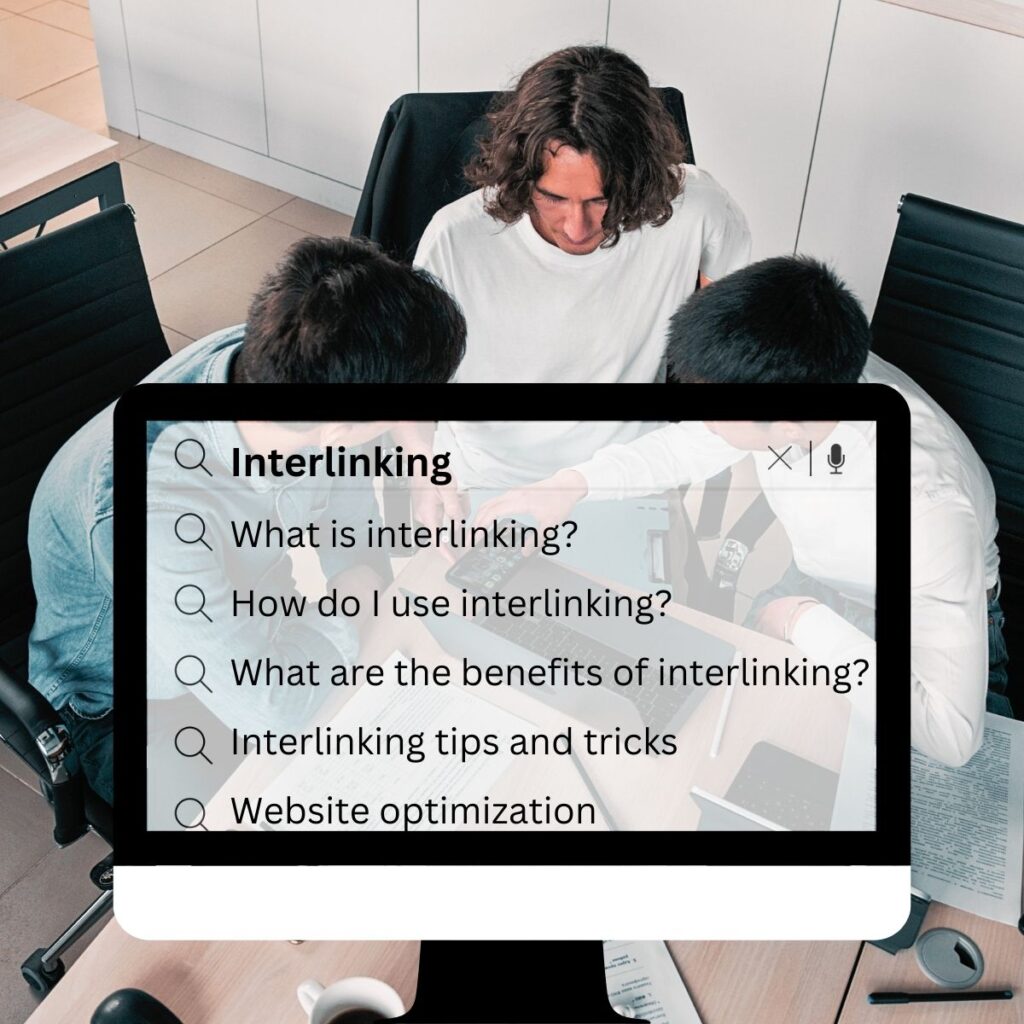In our last blog about SEO optimization, we discussed the importance of interlinking as a strategy that benefits a website’s SEO and enhances a user’s experience. By connecting different pages or assets on the same domain, interlinking can transfer link equity (ranking power) to important pages and assist Google in finding, indexing, and understanding all of the pages on your website.
We will discuss the benefits, the how-tos, and the best practices for your interlinking practices.

What are the benefits of interlinking?
Interlinking provides several benefits for your website, and when implemented in the right way, is a crucial feature for developing and optimizing your website.
One benefit is the improvement of navigation and usability of your site for users. It allows users to navigate between different pages within a website and helps them find relevant information easily by providing contextual links that connect related content.
Another benefit is interlinking will help reduce the bounce rate and increase the time a user is on your site. Strategic interlinking improves the user experience by offering a logical flow between pages, reducing the effort required to find relevant information, and encouraging the exploration of related content.
Interlinking using anchor text
The anchor text is the clickable part of the hyperlink that takes the user to another page. Utilizing descriptive and relevant keywords in your anchor text is crucial to give a sense of the page’s topic and increase the page’s rank. Effective use of anchor text is essential for both user experience and search engine optimization.
Avoid using generic or vague anchor text like “click here” or “read more.” Those text forms do not provide context or value for users or search engines and won’t help the page’s rank. Also, ensure to vary your anchor text and don’t use an identical phrase for two different pages; this will confuse Google and other search engines and will dilute your rankings.
How to know what to interlink and how many per page
Interlink pages that are relevant and useful for your users. You want to support your SEO goals, and a good way to do this is to develop a stable site architecture to highlight your fundamental topics and keywords. Link your high-authority pages (ones with more backlinks and traffic) to your low-authority pages (ones that need more ranking power). This pivot allows you to transfer some link equity from your strong pages to those that are weak and boost their visibility in search results.
As for the number of internal links a page should have, there is no definitive answer. A general rule of thumb is to have enough internal links to provide value for your users and search engines, but not too many that distract from your main content or create a spammy-looking page. Avoid linking to the same page multiple times on one page; this fails to add value and dilutes your link equity. Lastly, check your internal links regularly and fix any broken or outdated links that can harm your user experience and SEO.
How to optimize your page elements for interlinking
Optimizing your page elements for interlinking can enhance the ability to discover your content and facilitate seamless navigation for your website visitors. The goal is to improve navigation, user experience, and search engine visibility.
A title tag is the clickable headline that appears in search results and browser tabs. This feature should include your main keyword and be relevant and enticing for users. The meta description is the snippet of text that appears below the title tag in search results and should summarize the content and purpose of your page while including a call-to-action for users.
An H1 tag is the main heading of your page and tells the users and search engines what your page is about. It should include your main keyword and match your title tag to increase your page’s rank. Furthermore, images can be included as internal links by adding an alt attribute that describes the image and links to another page. This aspect will help improve the accessibility and SEO of your site.
Interlink with external sources
Continuing down the list of benefits, you can boost the relevance and authority of your pages for specific keywords and enhance the indexability of your site for search engines. When a highly authoritative page links to another page, it can pass on some of its authority and improve the visibility and ranking of the linked page. Search engines analyze the structure and interlinking of websites to understand the relationship between different pages and the overall relevance of the content, meaning that proper interlinking can improve a website’s visibility in search engine rankings.
Be careful when choosing which external sources to link to because these pages can affect your reputation and SEO. Only interlink to authoritative, non-competitive websites relevant to your page’s content.
Interlinking is a powerful technique that can help enhance your site’s SEO and user experience of your website. Following these best practices and tips, you can create a well-structured and interlinked website that can rank higher in search results and draw more organic traffic.
Marketing Works’ team of experts can help you create an interlinking strategy that moves you up the search rankings. Contact us today.
